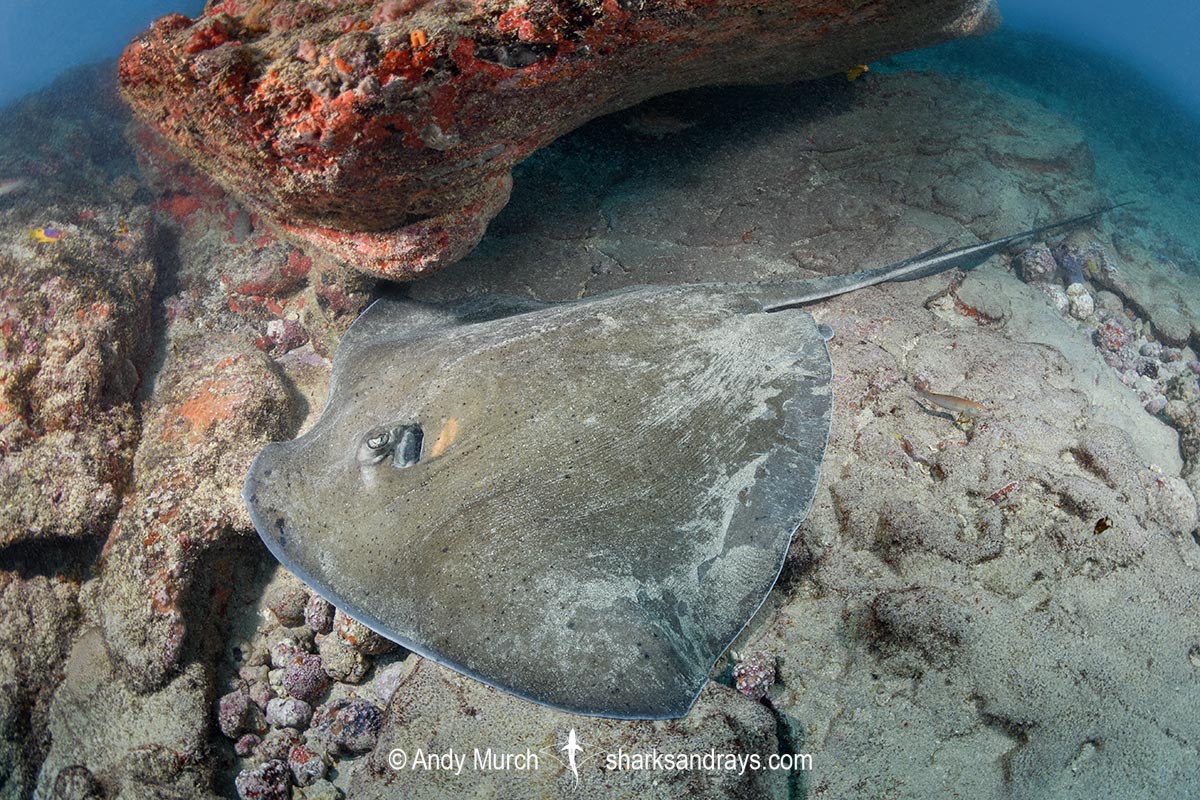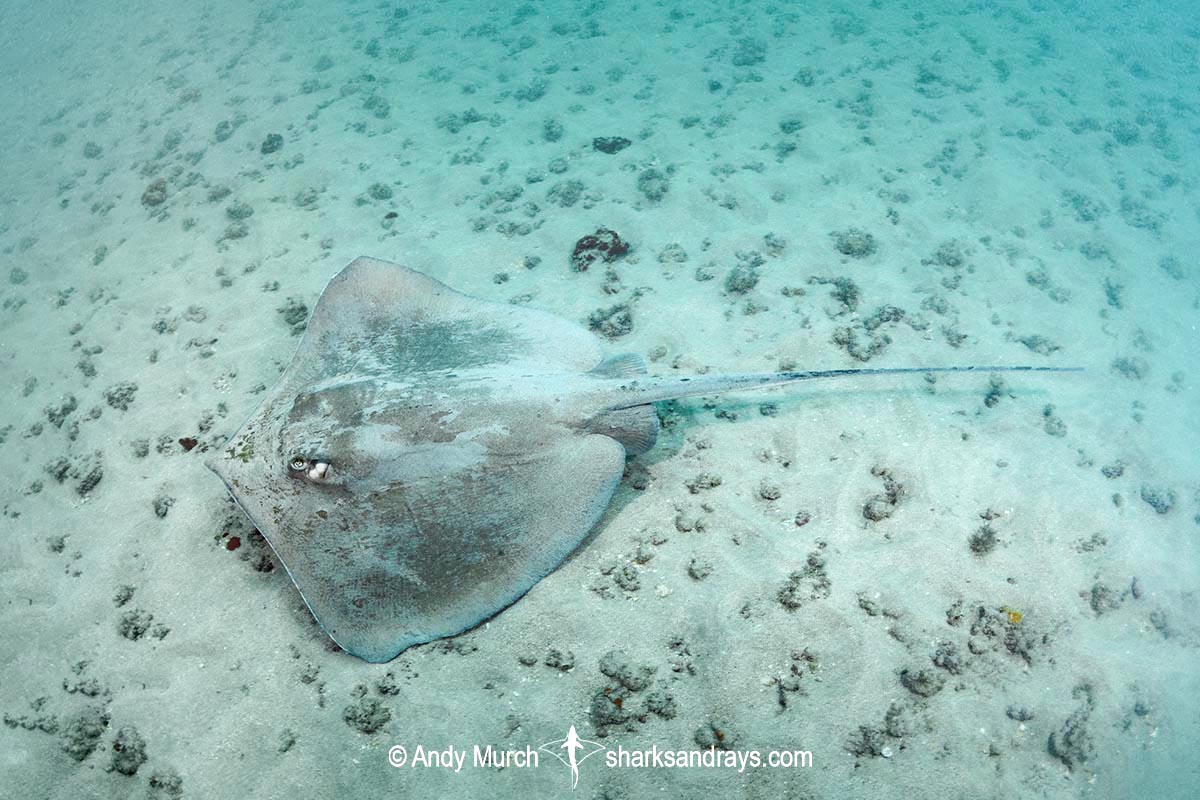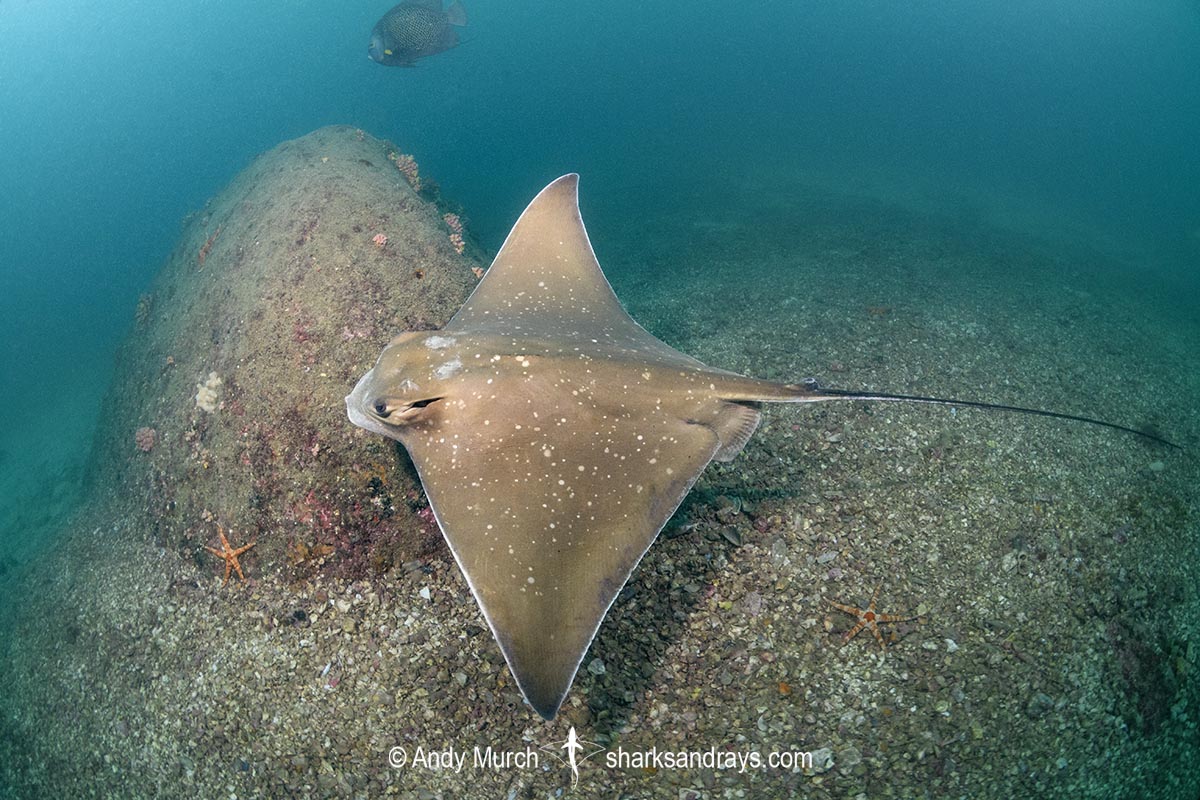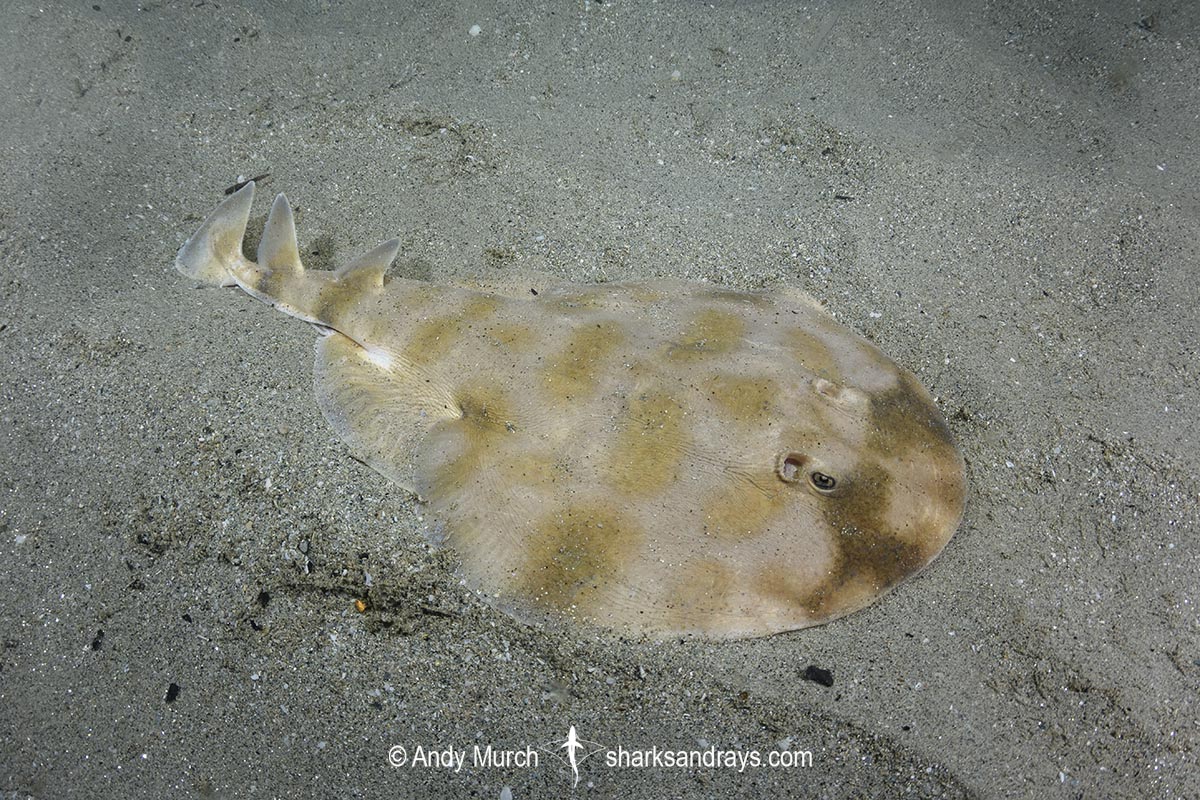Brazilian Saltwater Ray Photography Expedition
August/September 2023
August/September 2023

Brazil has an impressively diverse assortment of elasmobranchs; especially when it comes to rays. The big draw for visiting elasmophiles is Brazil’s exquisitely patterned freshwater stingrays in the interior, but coastal Brazil has its share of interesting batoids if you know where to look.
The northeast coast of Brazil is essentially undiveable due to the impenetrable plume of coffee-coloured freshwater flowing out of the mighty Amazon River.
Each year, the Amazon dumps thousands of tons of silt onto inshore reefs, but that does not mean the region is completely devoid of elasmos. Far from it! Bizarre predators like the Daggernose Shark with its flattened snout (shaped like a slice of pizza) and the peculiarly pointy Wingfin Stingray grope their way over the substrate, relying on sensory organs in their long snouts to locate unsuspecting prey.

1500km south of the Amazon on Brazil’s easterly tip, the first destination with passable water clarity is Natal; capital city of Rio Grande do Norte. Even here, the viz is rarely great, but it’s good enough to chase down some of Brazil’s more tropical rays including the Brazilian Large-eyed Stingray – Hypanus marianae; a small ray rarely seen further south.
When I visited in Natal, only one of the three listed dive shops was operational. Fortunately, Caju Divers turned out to be a great resource. The owner Paul Bouffis told me he rarely rarely sees Large-eyed Stingrays, but in a village to the north named Maracajou, they are relatively common. So I drove north for a couple of days to dive on a scruffy dead reef where I finally spotted a Brazilian Large-eyed Stingray and spent a few minutes stalking it while the ray grew more and more evasive and finally disappeared into the murk.

With a handful of barely passable images, I returned to Caju Divers to discuss what else I could look for around Natal. Paul told me that the ray he most commonly sees is the generic Southern Stingray; a large, wide-ranging ray that is found along the entire tropical western Atlantic coastline and easily photographed in Florida and the Caribbean. Fortunately, I was armed with more recent intel or I might have been tempted to move on.
In 2020 the wide ranging southern stingray was split into two closely related species, with original Southern Stingray – Hypanus americana occurring north of the Amazon River, and the newly described Lutz’s Stingray – Hypanus berthalutzae occurring to the south; the silt laden outflow of the Amazon creating an impenetrable habitat barrier between the two species.

The mission to capture images of a Lutz’s Stingray would involve boat diving on a couple of rocky reefs south of the city. I envisioned heading out in a Mexican-style panga with a fast outboard engine and tying up to a dive buoy, but the dive scene in northeastern Brazil hasn’t quite got there yet.
On a windy winter morning, we loaded tanks and dive gear onto a tiny wooden raft and paddled out to an old fishing boat that carried us to the reef, about 40 minutes offshore. The visibility at our first site was pretty ghastly, but we did manage to find a Longnose Stingray – Hypanus guttatus resting on the sand next to the reef just before surfacing.

On our second dive, Paul showed me around a rocky reef with a nice covering of encrusting coral and pretty good viz for this area. Over the course of the dive, we found two Lutz’s Stingrays. The first took off before I was close enough for a shot, but the second was extremely accommodating, posing patiently next to a drop off while I swum around it composing images.

Check out this video of our raft ride and Lutz’s Stingray footage:
Heading south from Natal, there are numerous destinations offering scuba diving, but a great destination for chasing rays is Armação dos Búzios; a quaint fishing village a few hours north of Rio. Popularized by Brigitte Bardot in the 1960s, Búzios is now a thriving resort town for well-heeled Brazilians, but it has managed to retain its village vibe.
Buzios Divers was kind enough to supply me with a private dive guide so that I could separate from the main dive group, most of whom wanted to putter around in the shallows. We explored the deeper slopes surrounding Ilha de Âncora; one of Buzio’s rocky offshore islets. Almost immediately, a Groovebelly Stingray – Dasyatis hypostigma exploded out of the sand and bolted away. Groovebelly Stingrays are the most abundant rays in Brazil, so it was not surprising that we ran into them on every dive around Buzios.

Ilha de Âncora also turned out to be a excellent spot for photographing Bullnose Eagle Ray – Myliobatis freminvillei. They were extremely shy, but I managed to sneak up on one by hiding behind a rock and snapped a series of images I was very happy with.

The final species I found on the sand flats around the island was a type of butterfly ray. Currently, this ray is listed in ID guides as the Spiny Butterfly Ray – Gymnura altavela, but Brazilian elasmobranch taxonomist Dr Marcelo Carvalho recently told me the western Atlantic form is in the process of being split from its eastern Atlantic cousin.
Shark taxonomy tends to move forward a glacial pace, so it could be years before the split is official. For now, lets call it the Western Atlantic Spiny Butterfly Ray – Gymnura sp.

For safety reasons, no one dives at the outer islands after dark, but there is a nice shore dive on the south end of Buzios that is well worth a night time dip. Less than 50m from the beach, I came across a dozen rays including more groovebelly stingrays, but the other two were completely new batoids.
The first was a Brazilian Electric Ray – Narcine brasiliensis. This species is quite similar to the Lesser Electric Ray – Narcine bancroftii that inhabits the Caribbean, but its markings are more pronounced, forming broken bands across its dorsum.

The final species I came across was a real treat. The Shortnose Guitarfish – Zapteryx brevirostris is one of three Trygonnorhinid rays (aka banjo rays) found in the Americas, and the only one I had left to photograph. The other two species live on the Pacific coast so this is also the only banjo ray found in the Atlantic. I actually saw a male and a female on the same dive, so they are probably quite common in this region.

There were a couple more species I could theoretically have stumbled across, but eight new species in two weeks of diving is a pretty fantastic haul. I highly recommend this stretch of coastline to anyone interested in significantly upping their life list of flat sharks.